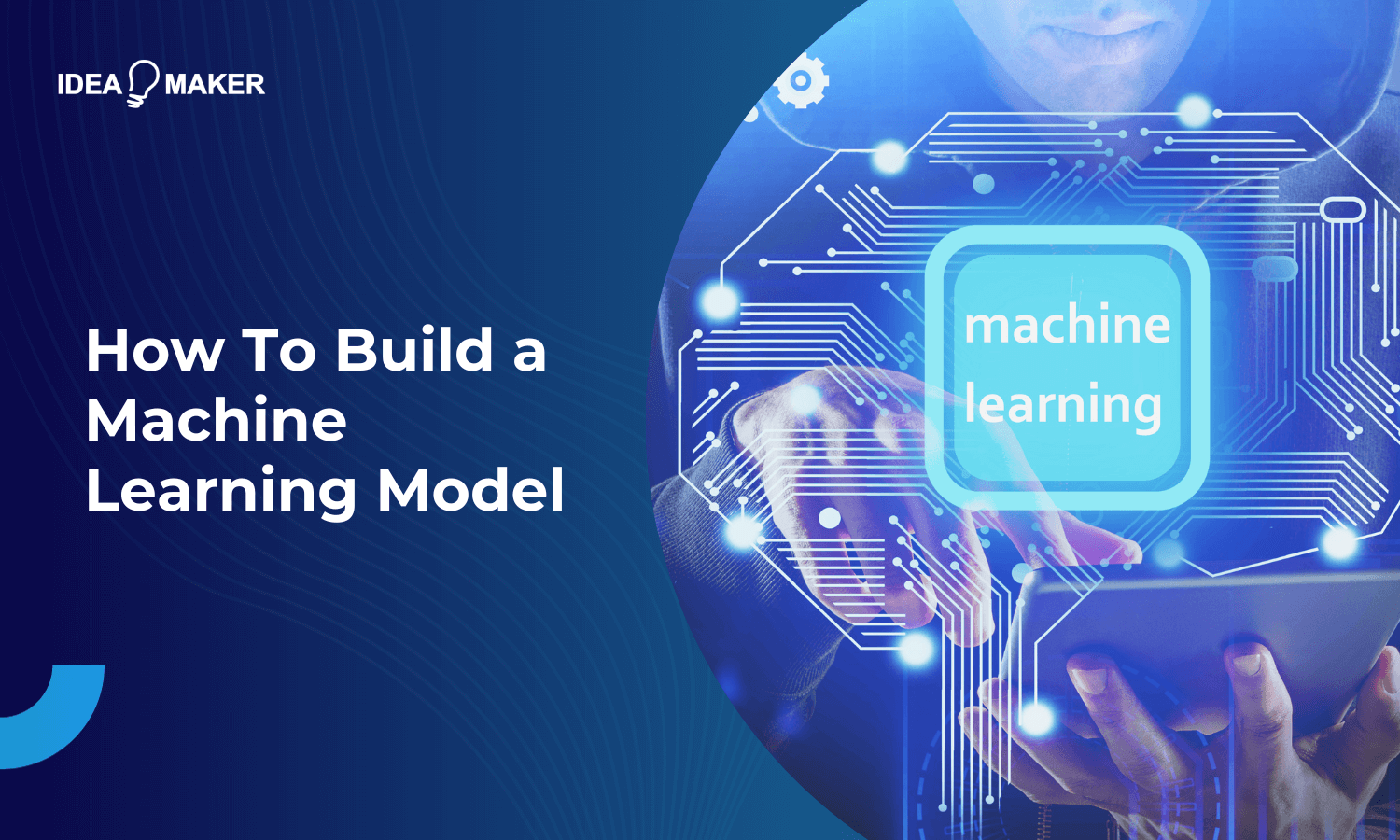Did you know that the machine learning (ML) industry is expected to reach a worth of over $225 billion by 2030? This is no surprise, considering machine learning is becoming increasingly ingrained into various aspects of daily life, from healthcare to self-driving cars. In fact, 2023 has been an especially monumental year for the technology, with advanced developments in AI chatbots like ChatGPT and Claude.ai.
You may feel like the ML ship has sailed, but it’s not too late to get involved, as machine learning still has a long way to go until it reaches its full potential. So, keep reading to find out how to get started in building your own machine learning model.
Table of Contents
What Is a Machine Learning Model?
At its core, machine learning is about training computer models to find patterns and make predictions by analyzing large datasets. The models get fed vast amounts of sample data, called training data, allowing them to figure out relationships between different variables within that data. As the models are exposed to more and more training examples, the algorithms can make more accurate predictions on new data the model hasn’t yet encountered.
For instance, a model can be trained on a database of medical images showing confirmed pneumonia cases. By seeing thousands of scans, the model learns subtle visual markers associated with pneumonia versus healthy lungs. After extensive training, the model can take X-rays from new patients and determine if they have pneumonia.
Types of Machine Learning Models
There are several different approaches used in machine learning models. Here is an overview of four of the most common types:
Supervised Learning
In supervised learning, the model is given labeled training data, meaning each data point has the “right answer” associated with it. The model examines these labeled examples in order to learn the relationships between variables and applies its learnings to new unlabeled data. Some examples of supervised learning algorithms include linear regression, random forests, and support vector machines. These are useful for classification and prediction tasks.
Unsupervised Learning
Unsupervised learning models work with unlabeled, unclassified data. There are no predetermined right or wrong answers; instead, the model itself identifies patterns and relationships in the data. Clustering algorithms like k-means are common unsupervised learning techniques used for exploratory data analysis.
Inductive Learning
Aiming to make broad generalizations from specific observations, an inductive learning model will infer rules from training examples, then apply these rules to new situations. This is in contrast to deductive learning, which starts with general principles then draws specific conclusions. Decision tree algorithms are based on an inductive learning approach.
Active Learning
In active learning, the model is able to interactively query the user or data source to obtain desired outputs at new data points. It can request labels for unlabeled data, focusing on maximizing performance. The model then adapts its learning behavior based on the information gained, reducing the total amount of training data required.
Things to Consider When Building a Machine Learning Model
Before building your machine learning model, there are some factors that should first be considered.
Training Data
The quality and size of your training data are crucial, as the model learns from these examples. This means it’s imperative to use a non-bias data set, otherwise your machine learning model may skew toward certain types of data. You should also ensure that your data is accurate, representative, and cleaned of any obvious anomalies.
Flawed training data will essentially lead to a flawed machine-learning model. If datasets are small, biased, or inaccurate, these problems become ingrained in the model’s logic, resulting in poor performance. Consequently, extensive data cleansing and preprocessing is required to avoid issues like sampling bias, underrepresentation, and anomalies that distort patterns.
Choice of Algorithm
There are many types of algorithms that can be utilized when developing a machine learning model, such as a neural network algorithm like ChatGPT. Selecting the right machine learning algorithm for your problem type and data structure will lead to a more refined and better functioning machine learning model.
As a result, the algorithm selection process requires careful consideration. Convolutional neural networks, for instance, excel at processing image data, while recurrent neural networks are better suited for sequence data like text. Although newer methods like deep learning garner significant hype, classical ML algorithms fine-tuned to the problem generally deliver top accuracy with greater efficiency.
6 Steps to Build a Machine Learning Model
Now that you understand the ins and outs of machine-learning models, it’s time to break down how to successfully build one of your own.
-
Collect Training Data
First, you’ll need to collect training data that will later be used to–you guessed it–train your ML model. The way you collect your training data will be different depending on the data type and your intended purpose for your ML model. For example, if you plan to build a chatbot, you’ll need to collect a variety of text conversations between real humans. If, however, you were to build a mathematical model, you’d need to teach it the basic rules of math and collect relevant quantitative data.
It’s essential to collect a large amount of diverse data relevant to your goals and ensure it is not biased or littered with inconsistencies and anomalies. Of course, sometimes this is unavoidable, which is where the next stage comes into play.
-
Clean and Process Data
Once you’ve collected your training data, it will need to be cleaned and processed. This means removing any obvious outliers and then processing your data into a format more easily understandable to computer algorithms. To do this, you’ll need to properly categorize your data and ensure datasets use consistent naming conventions.
-
Choose Machine Learning Model
The next stage is to choose your model, thoroughly researching the options and carefully considering the suitability of your chosen algorithm for your desired purpose. Here are a few types of the most popular algorithms you may choose to use:
- Neural Network: A computational model that uses interconnected neural units to model complex relationships between inputs and outputs, neural networks are excellent for solving complex problems like image recognition.
- Random Forest: Random forest is an ensemble method that constructs multiple decision trees during training and outputs the mode of the classes as a prediction. This model typically performs well with classification and regression tasks.
- Linear Regression: Linear regression is a statistical model that finds the line of best fit for a dataset. It’s a simple yet powerful baseline algorithm that’s great for predictions and modeling linear relationships.
- Support Vector Machine: A support vector machine plots data points in space and generates a maximal margin hyperplane to separate classes, making it ideal for classification tasks with limited data.
-
Train Your Machine Learning Model
After selecting your machine learning algorithm, you can then begin training the model by feeding it your data. ChatGPT, for example, is continuously trained and refined through conversations with users.
Depending on your intentions, this stage may require the development of a user interface, such as a chatbox. Otherwise, your training data can be processed in the backend. For instance, if you’re building an ML model using Python, you can use the import feature to attach external data.
-
Evaluate and Refine Model Performance
Once you’ve trained your machine learning model, you’ll then need to evaluate its performance. In order to do this, you should run a series of tests to review its intended function. For example, when creating a large language model aimed at conversing like a human, you will need to test its ability to understand the content and produce human-like responses.
After identifying any issues or areas of improvement, you can set about refining your model. This may involve updating and changing your training data or implementing an entirely new algorithm that’s better suited to your purpose.
-
Deploy and Implement
Finally, once you’re happy with your ML model, it’s ready for deployment and implementation, which will look different depending on your type of model and its intended purpose. For example, if you plan to publicly release your model in order to gather more data, you will need to develop a user-friendly user interface, as well.
Machine Learning Model Development From Idea Maker
Developing a machine learning model is challenging and requires a vast amount of resources and expertise. However, with Idea Maker, you can benefit from building an ML model without doing the heavy lifting yourself. Schedule a free consultation with us today to learn more about how our dedicated developers and machine learning specialists can help bring your project to life.











